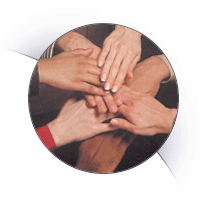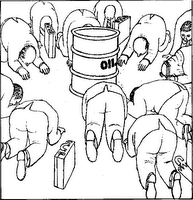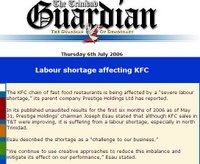 This is an impossible question to answer.
This is an impossible question to answer.
The most successful interventions are those that are designed on the spur of the moment, when it seems that it is impossible to proceed without a formal-looking design.
This is not to say that planning has no place in designing interventions.
Far from it, well-made plans are a kind of rehearsal for a flow of events that is most likely to happen, even when it is understood that the planned flow of events is unlikely to happen.
For example, I might plan a wonderful holiday in Tobago for the September time-frame, only to run into the worst tropical depression the island has seen in ten years. The rain might completely disrupt the plans I had to lay out on the beach, in my swimsuit, covered in sunscreen. That may well have been the most likely course of action, but given the actual events, have nothing to do with what I actually end up doing.
At that moment, it would be a mistake for me to lament the lack of sunshine for more than a second.
Instead, the planning I did should free me up in the moment. Once the rain starts, I need to give up my prior plans and make new ones, based on what is happening in the moment.
Very often, business leaders get so attached to their plans that they try to execute them without regard for what is happening in front of them. Or, when faced with obstacles, they play the victim, bemoaning the fates for what has fallen upon them.
Plans are simply not made to be followed (unless they are.) In every other case, they are intended to free up our minds to respond to what is happening in the moment, and once they prove obsolete, they MUST be discarded wholeheartedly.
Interventions are best conducted when the mind is free and supple, able to respond to what is happening in the moment. They can be likened to guerrilla warfare, jiu jitsu or the kind of unstructured play that has a mood-altering effect, but no overt strategy. Guerrilla warfare is flexible, adaptable and free-flowing, as is jiu jitsu, in which one’s response is determined by one’s opponents actions.
Successful interventions require a certain kind of responsiveness, due to the ever-changing nature of the organizational situation.
For example, on a smaller level, part of a manager’s job is to intervene in the performance and behaviour of his/her subordinates.
They might spend hours planning what to say, only to realize in the moment that they must abandon their strategy in order to engage the employee wherever they might be.
This is difficult do on a person to person basis.
It is even harder to do when the intervention is undertakes as a group, and devilishly challenging to undertake when the whole organization must be taken to a different level, and the tools of intervention are needed.
What skills are needed to compose a successful intervention? How does one get trained to conduct them successfully?
The skilled practitioner operates like a trauma surgeon in some ways — skilled at very many disciplines, but not wedded to any single approach. If a piece of string will do the job, then that what is what is used. Moving quickly to capture opportunities (such as the trauma patient’s “Golden Hour”) the surgeon cares only about the outcome, and less about the means.
The practitioner of interventions may have a wide base of training, but they fade into the background when the problem presents itself and solutions are provided just as they are needed.
In fact, this is the only way that solutions can be derived.
The problem that is first recognized in the company might be solved (usually only in part) by the first intervention. However, that first intervention inevitably has some unlikely effects, only some of which are wanted.
In short, the intervention changes the state of the organization, and this new situation must be dealt with on its own terms, regardless of how fancy or detailed the plans that were made might be.
Interventions, therefore, take a strong stomach as by their very nature they throw up surprises and shocks that change how the organization is understood. Just-in-time design becomes the order of the day, not because of a lack of foresight, but due to the success of each intervention that is designed to cause a state change. The state change produces a resulting state in which a new set of designed actions is required just to stay on top of the effects that have been spurred.
This is why it is impossible to say what interventions consist of exactly, beyond trite components such as “listening” and “speaking.” This is also why they require a certain kind of courage, and willingness to fail, trusting that individual failures might only mean that the original plan was too limited to account for the scope of changes intended.
There is a single skill that the skilled practitioner cannot do well without, however. He/she must be willing at all times to accept that which is, or as Byron Katie puts it in his book of the same name: “Love What Is.”
The skill to fully accept a current situation, current facts or current reality are perhaps the most important, and the single ability that differentiates the expert from the novice.
As Eckhart Tolle, author of The Power of Now, puts it:
The opportunity that is concealed within every crisis does not manifest until all the facts of any given situation are acknowledged and fully accepted. As long as you deny them, as long as you try to escape from them or wish that things were different, the window of opportunity does not open up, and you remain trapped inside that situation, which will remain the same or deteriorate further.








